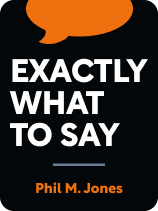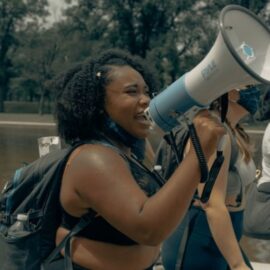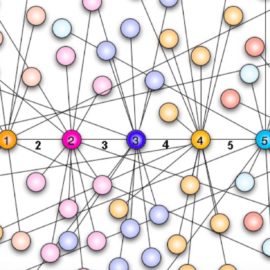

This article is an excerpt from the Shortform book guide to "Exactly What to Say" by Phil M. Jones. Shortform has the world's best summaries and analyses of books you should be reading.
Like this article? Sign up for a free trial here.
Want to know some of the best open-ended sales questions? What are the best techniques for asking open-ended questions?
Author and sales expert Phil M. Jones wrote Exactly What to Say to teach readers how to use conversational selling to appeal to their customers’ subconscious minds. Jones claims that the best open-ended sales questions should help you to control the direction of the conversation.
Keep reading for the best open-ended sales questions, according to Jones.
Techniques for Asking Sales Questions
Do you want to land new customers quickly? Phil M. Jones claims he can help you to improve your business interactions by using the key phrases found in his book Exactly What to Say. In the book, he offers some of the best open-ended sales questions to help you keep control of the conversation and steer it toward your desired outcome. In this article, we’ll describe three of Jones’s techniques for asking open-ended sales questions when a customer is undecided, according to the descriptions in Exactly What to Say.
Create a Path of Least Resistance
According to Jones, one of the best strategies in sales for convincing an undecided customer to say “yes” is asking open-ended questions (as opposed to questions with a yes or no response) because it helps you to control the direction of the conversation and makes your desired response the easiest response.
Jones explains that asking open-ended sales questions keeps the conversation going and makes it easier for people to give you information, rather than saying no. For example, it’s best to change the closed question, “Are you looking to buy a new computer?” to an open-ended question, “What kind of computer would you ideally like to have?” In the closed form, it’s easy for the customer to say no and end the conversation. With open phrasing, the customer is more likely to engage with you because it is more difficult for them to either ignore you or tell you they don’t want to answer the question.
| Open and Closed Questions Have Unique Benefits in Sales Although Jones prefers open questions because they prevent an abrupt end to your conversation, Neil Rackham’s SPIN Selling explains why both open and closed questions are valuable tools and describes a more thorough approach to asking questions on a sales call. Similar to Jones, Rackham argues that open questions are more engaging and encourage more detailed responses that give valuable insight into the customer’s preferences. On the other hand, closed questions are useful if you want to engage with your customer less. For example, if you have limited time or if your customer is very talkative, a closed question will help you get to the point faster. Rather than focusing on open versus closed questions, Rackman recommends a strategy called the “SPIN Sequence”, which includes the following types of questions: 1. S- Situation questions: Ask background questions about the customer, such as “What are your main priorities?” 2. P- Problem questions: Ask questions about what problems you can potentially solve for your customer. For example, “Are you worried about the amount of time it takes to troubleshoot equipment?” 3. I- Implication questions: Ask questions that emphasize the impact of the situation and problems that the customer identified. For example, “How will the time inefficiency of troubleshooting equipment impact your overall revenue and goals?” 4. N- Need-payoff questions: Ask questions that encourage the customer to state how your product can meet their needs. For example, “How useful would it be if we could reduce the time you spend troubleshooting equipment?” |
In addition to asking open-ended sales questions, try using the phrase “Most people…” because it creates a path of least resistance in your favor. If a prospective customer is on the fence, and you tell them, “Most people try the product for a month and end up loving it,” the customer trusts that people before them in the same situation made a good decision. They feel more confident that they should do the same as “most people” in the hopes of a similarly good outcome.
(Shortform note: Research suggests that people tend to conform not because they trust other people’s decisions, but rather because they want to fit in socially. One motivating factor for conformity is maintaining harmony within social groups. For example, if everyone in your social group wants to go on vacation to a certain place, and you don’t, you might go along with their choice to avoid conflict. In addition, people go along with what others want for the pleasure of fitting in and gaining the approval of others. This explains why, even if they don’t know the other people who supposedly chose to buy a product, a customer might subconsciously believe there is a social benefit to making the same decision.)
Appeal to Universally Positive Traits
Since people like to think of themselves as open-minded, Jones says that starting the conversation with the phrase “How open-minded are you…?” encourages customers to tell you that they are willing to consider your product or idea. The question implies that if they are open-minded in general, they can prove it by fulfilling the request that follows.
For example, if you start a sales pitch with, “How open-minded are you about trialing this new service I’m offering?” the customer is likely to say, “I’m open to that,” giving you the opportunity to share more information. The logical alternative is, “No, I’m not open-minded about that,” which would reflect poorly on the other person because they want to be perceived as open-minded. If the customer concedes early in the conversation that they’re at least open to your idea, you are one step closer to making a sale.
| Open-Mindedness in the “Fair Exchange” Sales Opener In The Psychology of Selling, Brian Tracy mentions the phrase “open-minded” at the beginning of a sales pitch, but he uses it as part of a broader strategy for a “Fair Exchange” opening of a business sale. In this method, the salesperson starts with something like, “All I’d like to do is tell you about why so many people love this product. Listen to my proposal with an open mind and then let me know if that sounds like it would work for you. Does that seem fair?” Though Tracy does not explicitly mention the benefits of the term “open mind,” both strategies set you up for the customer to agree that they will listen to the pitch. In addition, the use of the word “fair” in Tracy’s opener similarly appeals to a positive trait. According to Jones’s logic, the customer likely wants to agree because they want to be seen as open-minded and fair. Tracy’s opener differs from Jones’s because it adds the layer of suggestion that other people like the product. This aspect overlaps with some of Jones’s other phrases that we’ll highlight later in the guide, like “Most people…”, demonstrating how phrases can be combined depending on the context. |
Appeal to Emotion
Because people are emotionally driven, one way to persuade an undecided customer is to leverage their natural desire to feel positive emotions and avoid negative emotions. Jones argues that when you’re trying to make a sale, use the open-ended question “How would you feel if…” because it makes people actually experience the emotion of the conditional scenario.
Another way to appeal to the customer’s emotion is with the phrase “The good news is…”. This phrase subconsciously stimulates positive emotions and makes people want to act on them by accepting your offer. For example, you could say, “The good news is, I can give you a special deal on my product for this one time only.” The key phrase signals to the listener that something positive is happening, whether or not they were initially wanting that product. The positive feeling they experienced makes them want to capitalize on the good news by accepting your offer.
| Negative Emotions Are More Powerful Than Positive Ones Evidence suggests that appealing to negative emotions (using “How would you feel if…”) in the context of a business sale is even more powerful than appealing to positive emotions (using “The good news is…”). Research shows that humans have a negativity bias, which means that negative events (losses) affect us more intensely than positive events (gains). In Thinking Fast and Slow, Daniel Kahneman explains this as an evolutionary trait that emerged because humans were more likely to survive if they responded to threats more urgently than opportunities. For example, running away to avoid a predator is more urgent than the opportunity to forage for some food. Today, that instinct makes us base decisions more heavily on loss aversion than potential gain. As a result, telling someone to imagine missing an opportunity and failing has a much bigger impact than telling them to imagine how happy they’ll be when you have their product. |

———End of Preview———
Like what you just read? Read the rest of the world's best book summary and analysis of Phil M. Jones's "Exactly What to Say" at Shortform.
Here's what you'll find in our full Exactly What to Say summary:
- How to improve your business interactions by using key phrases
- How to appeal to your listener’s subconscious mind and guide them to a decisive “yes”
- How you can capitalize on a conversation even if a customer says "no"






